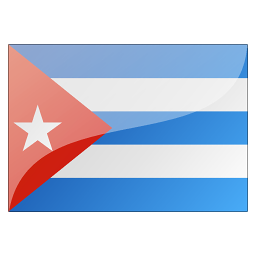



The nation’s fourth-largest city serves up authentic provincial Cuba without the wrapping paper. Though the city of San Isidoro de Holguín barely features in Cuba’s tourist master plan, there’s magic and mystery here for a certain type of traveler. There's an overabundance of shiny vintage Chevys, plazas filled with uniformed school children sharing wi-fi and interactions not marred by rushing or selling. Use it as a window to life in the interior: from the religious solemnity of the annual procession climbing Loma de la Cruz to the exuberant cheers pouring forth from the oversized baseball stadium.

Drömlika stränder, lyxresorter och djurvård. En udda kombination? Inte på den kubanska ön Cayo Largo där besökare kan följa hotade sköldpaddsarter från ägg till frisläppning.

Majestic, spread-out Vedado is Havana's once-notorious Mafia-run district. During Cuba's 50-year dalliance with the US, this was the city's commercial hub and, in many ways, it still is; although these days the nightlife is less tawdry, the casinos have become discos, and the hotels seem more like historical relics than havens of luxury.

Trinidad is one of a kind, a perfectly preserved Spanish colonial settlement where the clocks stopped in 1850 and – apart from a zombie invasion of tourists – have yet to restart. Huge sugar fortunes amassed in the nearby Valle de los Ingenios during the early 19th century created the illustrious colonial-style mansions bedecked with Italian frescoes, Wedgwood china and French chandeliers.

A fantasy land of crinkled mountains and exuberant foliage, the Cuban Guantánamo remains a galaxy away from modern America in ambience. That doesn't stop most people associating it with the United States Guantanamo Bay Naval Base, which continues in operation, though downsized. Off the base, the region’s isolated valleys and wild coastal microclimates (arid in the south, lush in the north) are Cuba at its most mysterious and esoteric. Herein lie primitive musical subgenres, little-known Afro-Cuban religious rites, and echoes of an indigenous Taíno culture supposedly wiped out by the Spanish centuries ago – or so you thought.

On first impressions, Havana can seem like a confusing jigsaw puzzle, but work out how to put the pieces together and a beautiful picture emerges.

This small but well-endowed province is Cuba at its loveliest, also guarding a precious chunk of the country's fantastical historical legacy. Sancti Spíritus Province boasts nature worth exploring. The best on Cuba’s underwhelming south coast, Playa Ancón is a stunner. And then there are mountains. Outside Trinidad, the haunting Escambray offers outstanding hiking on a network of picturesque trails.

A historic refuge from the law for everyone from 16th-century pirates to 20th-century gangsters, La Isla is perhaps the quirkiest castaway destination you ever will see. Dumped like a crumpled apostrophe 100km off mainland Cuba, this pine-tree-clad island is the Caribbean's sixth-largest. But the Cayman Islands this isn't. Other tourists? Uh-uh. And if you thought mainland Cuba's towns were time-warped, try blowing the dust off island capital Nueva Gerona, where the main street doubles as a baseball diamond, and the food ‘scene’ is stuck in the Special Period. Yet, if you make it here, you're in for a true adventure. The main lure is diving some of the Caribbean's most pristine reefs, but otherwise get used to being becalmed with the coral, the odd crocodile and a colorful history that reads like an excerpt from Treasure Island.

Few parts of the world get named after yachts, which helps explain why in Granma (christened for the boat that delivered Fidel Castro and his bedraggled revolutionaries ashore to kick-start a guerrilla war in 1956) Cuba's viva la Revolución spirit burns most fiercely. This is the land where José Martí died and where Granma native Carlos Manuel de Céspedes freed his slaves and formally declared Cuban independence for the first time in 1868.

Tobacco is still king on Cuba's western fingertip, a rolling canvas of rust-red oxen-furrowed fields, thatched tobacco-drying houses and sombrero-clad guajiros (country folk).